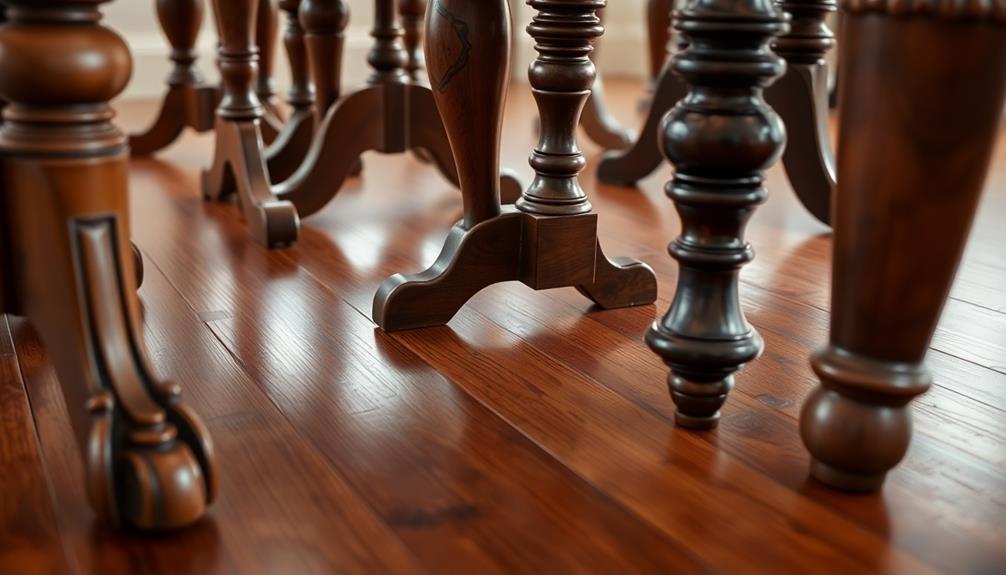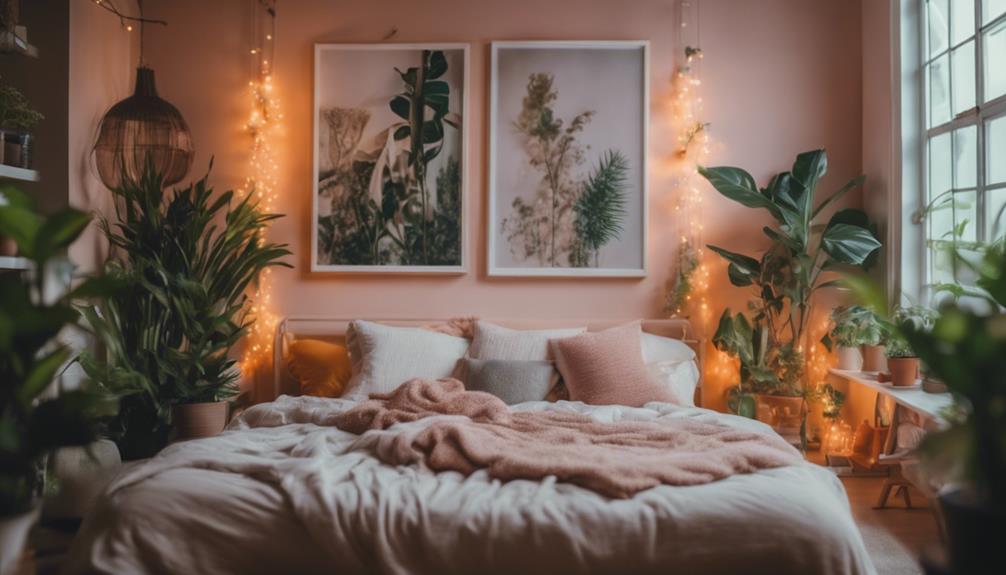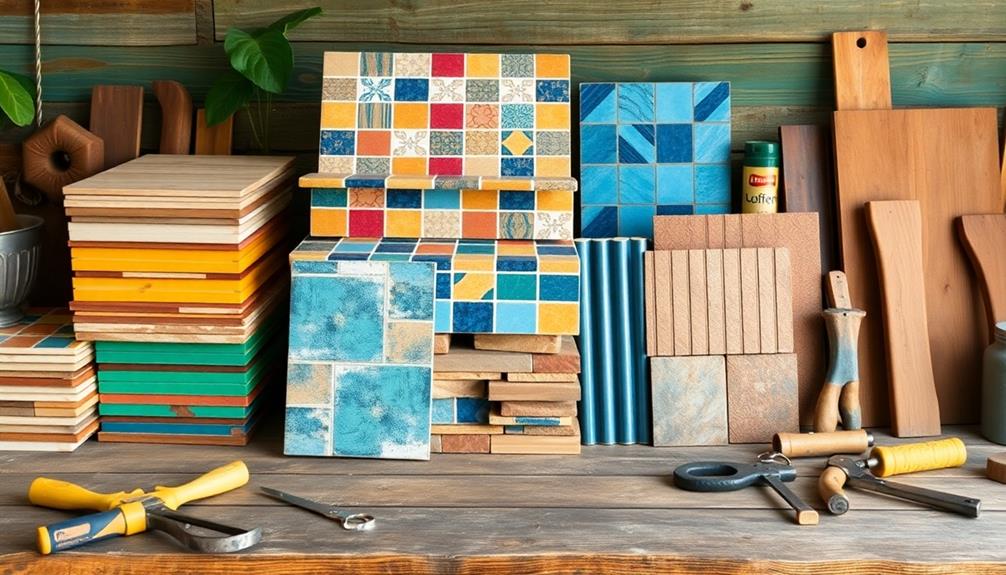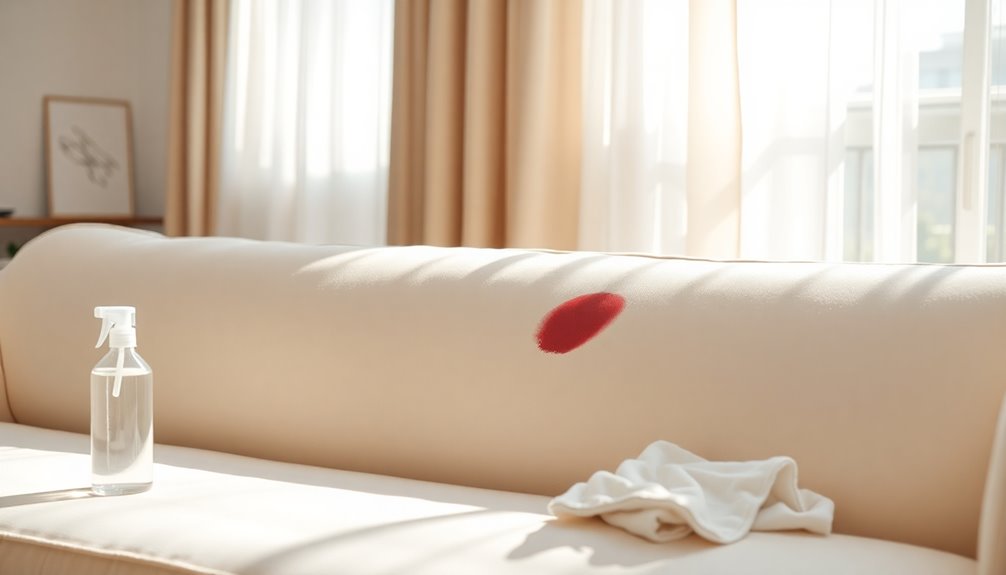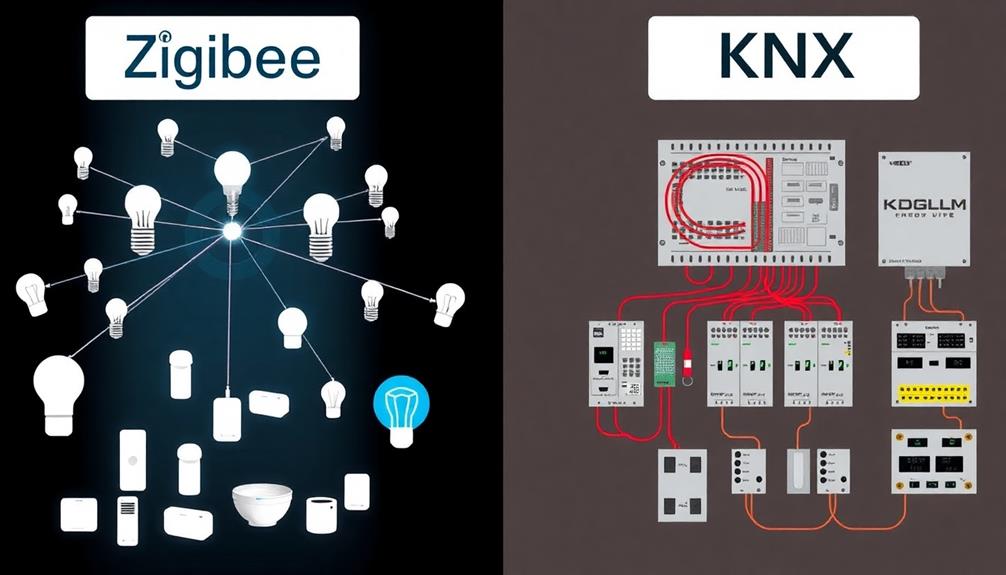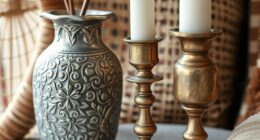To determine the age of antique furniture based on its feet, start by closely examining the design and shape of the feet. Various styles such as ball or pad feet are indicative of specific time periods; for instance, ball feet are traced back to the early 1600s. Pay attention to wear patterns and the materials used as they can offer insights into authenticity and age. Consider regional differences because foot styles often reflect local craftsmanship. Scrutinizing these details will enable you to accurately date and identify the piece. For those curious about the intricacies of foot designs, there is a wealth of information to delve into to further hone your expertise.
Key Takeaways
- Examine the shape and style of feet; specific designs like ball and claw indicate particular historical periods.
- Identify materials used in the feet, as certain woods and nails correlate with specific eras.
- Assess the condition and wear patterns of the feet for clues about age and usage history.
- Recognize regional variations in foot styles to understand local craftsmanship and influences on design.
- Be aware of common mistakes, such as misidentifying foot styles or overlooking alterations that affect authenticity.
Importance of Furniture Feet
Understanding the importance of furniture feet can greatly enhance your appreciation for antique pieces. The styles and designs of furniture feet offer vital insights into the historical context of the period in which they were crafted. By examining these feet, you can uncover the unique characteristics that reflect the craftsmanship of their time, making it easier to identify and date antique furniture.
Additionally, just as in financial planning where diversification strategy helps to manage risk, recognizing various foot designs adds depth to your understanding of antique furniture.
For instance, specific foot designs like ball and claw or pad feet are indicative of particular styles and eras. Recognizing these elements allows you to make educated guesses about the age of a piece, which is essential for authenticating antiques. Knowledge of furniture feet also helps you spot reproductions, as authentic antique feet possess distinctive characteristics that modern imitations often lack.
Moreover, the condition of feet typically remains untouched during restorations, preserving original design elements that can aid in accurate dating.
Historical Foot Styles Overview
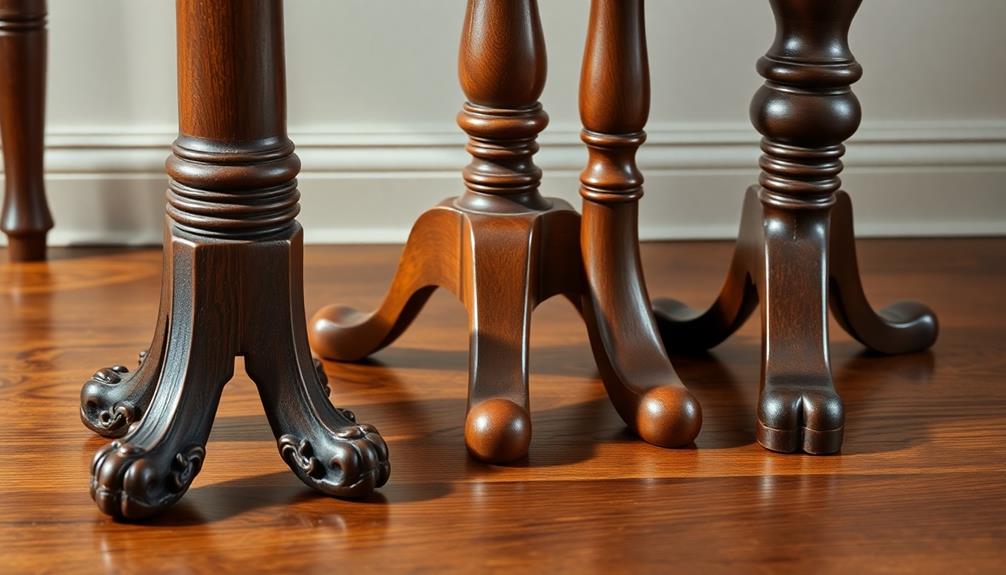
Explore the fascinating evolution of furniture foot styles, which reveal much about the design trends and craftsmanship of their respective eras. In the early 1600s, simple round ball feet emerged, remaining popular until the 1800s. This basic design laid the groundwork for various styles that followed.
The Marlborough foot, a block-style foot characterized by its square or rectangular shape, was commonly used from the 1600s to the 1800s, making it a significant marker to help you determine the age of antique furniture. Understanding the balance between beauty and practicality in these designs can provide insight into the cultural influences of their time, as highlighted in unique charm results from blending beauty with practicality.
One of the oldest styles, trestle feet, dates back to the Middle Ages, featuring a T-shape design that offers stability. In the late 1600s, whorl feet, resembling a decorative spiral, became popular, often linked to the ornate Rococo style.
Toupie feet, reminiscent of spinning tops, gained traction from the mid-18th century onward, associated with the grandeur of Louis XIV styles. Understanding these historical foot styles not only adds depth to your appreciation of antique furniture but also serves as a valuable tool in identifying and dating significant pieces.
Characteristics of Key Foot Styles
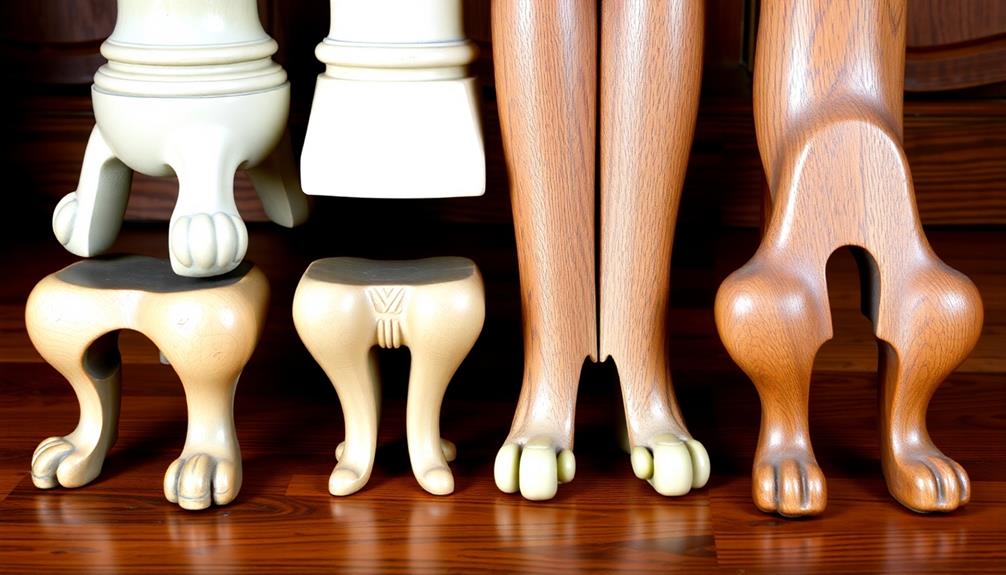
The charm of antique furniture lies not only in its history but also in the distinctive characteristics of its foot styles, which can help you accurately date and appreciate each piece.
For instance, ball feet are simple and spherical, dating back to the early 1600s, often gracing chests and sideboards in the William and Mary style. As you explore pad feet, you'll notice their flattened oval shape resting on a cylindrical disk, typical of the Queen Anne style from the early 1700s. Many antique pieces feature natural materials like wood, which can also enhance their overall appeal and authenticity.
If you come across toupie feet, which resemble a spinning top, you'll find they were popular in the second half of the 17th century, linked to Louis XIV styles.
Bracket feet present a basic shape with variations like ogee and scrolled designs, commonly associated with Hepplewhite and Sheraton styles from the 18th century.
Finally, cylindrical feet, with their turned design that swells and tapers, are often found in Georgian and Neoclassical furniture, showcasing a refined aesthetic.
Recognizing these key foot styles will enhance your understanding of antique furniture and its evolution through various furniture styles.
Techniques for Dating Furniture
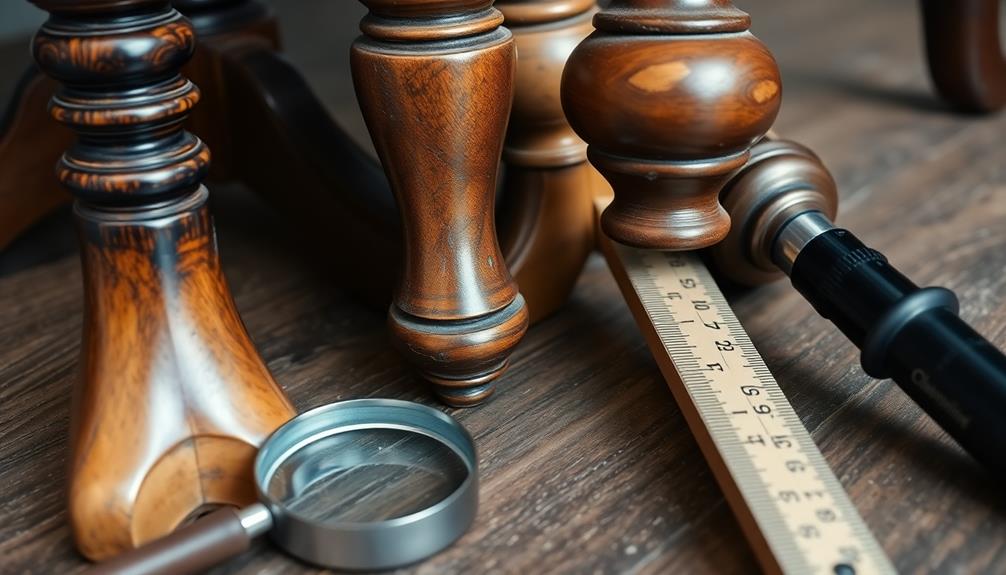
When you want to date antique furniture accurately, examining the feet is a crucial first step. Start by looking at the shape and style of the feet. For instance, ball feet date back to the early 1600s, while pad feet emerged in the early 1700s.
Next, assess the condition of the antique furniture feet for signs of wear. Deterioration patterns can reveal clues about the furniture's age and usage over time.
Identifying the materials used is equally important. The type of wood and production techniques, such as the presence of square nails, can indicate craftsmanship from specific eras, with square nails common until the early 19th century.
Additionally, analyze the design intricacies, like carvings or unique features. For example, ball and claw feet are often linked to Chippendale furniture from the 1700s.
Regional Variations in Foot Styles
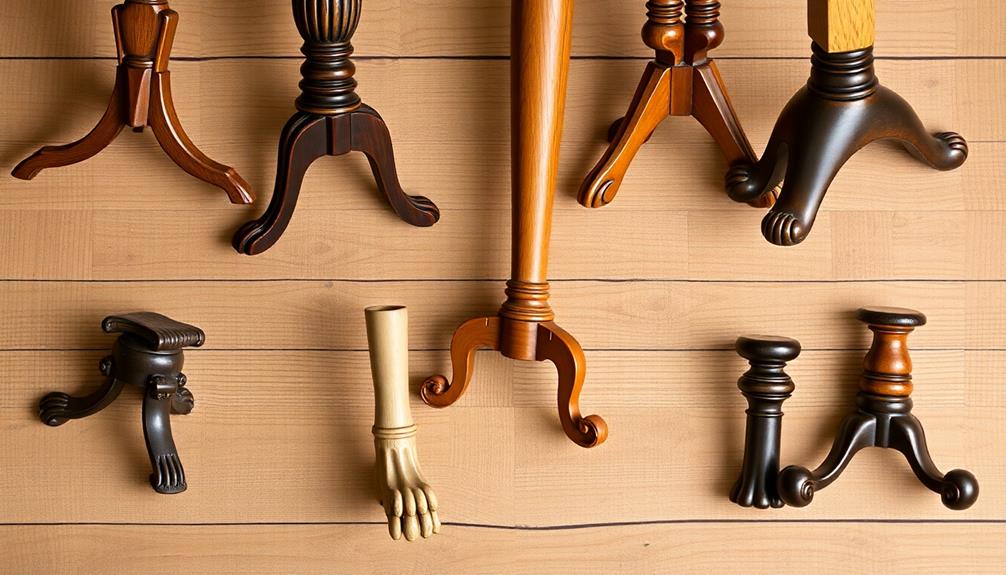
Examining foot styles reveals fascinating regional variations that highlight local craftsmanship and materials. Each region's unique characteristics can help you identify the origins of antique furniture.
| Foot Style | Region |
|---|---|
| Ball and Claw Feet | American Chippendale |
| Philadelphia Trifid Foot | Philadelphia |
| Decorative Whorl Feet | European Rococo |
| Tapered Cylinder-Shaped Feet | Mid-18th Century England |
For example, the ball and claw feet are iconic in American furniture, especially in Chippendale pieces, while the simpler pad foot is more common in English Queen Anne-style furniture. In Philadelphia, the trifid foot is often seen on cabriole legs, showcasing local artisans' craftsmanship.
Conversely, the decorative whorl feet found in Rococo furniture illustrate the elaborate designs favored in Europe, contrasting sharply with the more utilitarian styles of American colonial furniture. Trestle feet indicate a practical design approach in rural settings, while tapered cylinder-shaped feet, like arrow feet, reflect mid-18th-century English elegance. Understanding these regional variations will enhance your ability to date and appreciate antique furniture.
Common Mistakes in Dating
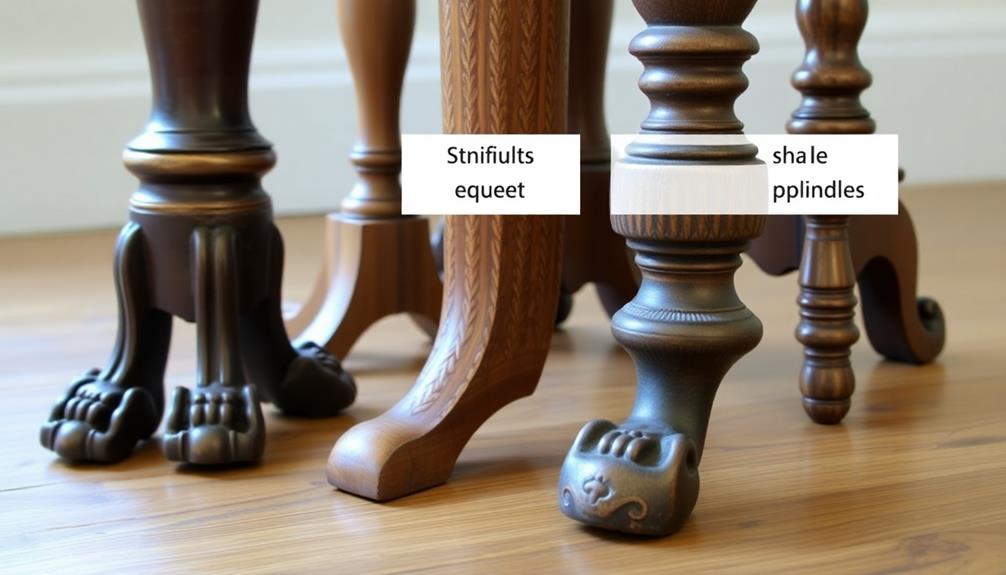
When dating antique furniture, it's easy to misidentify foot styles that reflect specific historical periods.
You might overlook the authenticity of materials or ignore the broader historical context, leading to serious misjudgments.
Let's explore these common pitfalls so you can refine your dating skills.
Misidentifying Foot Styles
Misidentifying foot styles is a common pitfall for those trying to date antique furniture accurately. Understanding the nuances of different foot styles can save you from significant errors. For example, ball feet were popular from the early 1600s through the 1800s, with various designs evolving over time. Misidentifying block feet as Marlborough feet can lead to confusion, as block feet span a broad timeframe.
Here's a quick reference table to help you differentiate between common foot styles:
| Foot Style | Time Period | Key Characteristics |
|---|---|---|
| Ball Feet | Early 1600s to 1800s | Round, bulbous shape |
| Block Feet | 1600 to 1800 | Square and sturdy |
| Marlborough Feet | Mid-18th century | Straight legs with a subtle flair |
Many collectors also mistakenly attribute whorl feet solely to the Rococo period, while spade feet and tapered cylinder feet have distinct timelines that are often confused. Recognizing these variations in foot styles is essential for accurate dating of antique furniture.
Overlooking Material Authenticity
Overlooking material authenticity can lead to significant errors in dating antique furniture. When you attempt to date antique furniture by feet, it's easy to mistakenly assume that certain wood types automatically indicate the age of a piece. However, similar woods were commonly used across various periods, making it essential to conduct a detailed examination.
Don't forget to reflect on the finishes applied to the furniture; synthetic finishes introduced in the late 19th century can disguise older wood and mislead you about original construction methods. Alterations to furniture, like replacement feet or reupholstered surfaces, can further obscure original materials and craftsmanship, complicating your dating efforts. Additionally, cleaning old wood furniture can sometimes remove valuable patina, which provides important clues about the piece’s age and history. Harsh chemicals or abrasive techniques may inadvertently strip away these layers, making it harder to accurately assess the furniture’s origins. Always proceed carefully, ensuring any restoration work preserves as much of the original integrity as possible. It’s important, therefore, to approach cleaning wood furniture with natural methods to preserve its patina and historical value. Opting for gentle, natural cleaners like vinegar or mild soap can help maintain the original finish while still removing dirt and grime. By taking extra care, you can avoid damaging the piece and ensure that its authenticity remains intact for future evaluations.
Pay close attention to nails and joinery techniques, as the shift from handmade to machine-cut nails in the early 19th century serves as a critical indicator of a piece's age. Misinterpretation of patina and wear patterns can also lead to incorrect assumptions about authenticity, as these factors mightn't correlate with the original materials used in construction.
To avoid these common mistakes, refer to an extensive guide on material authenticity to enhance your understanding and accuracy in dating antique furniture.
Ignoring Historical Context
Many collectors make the mistake of ignoring the historical context of furniture designs, which can lead to misdating antique pieces.
For instance, specific foot styles like ball feet were prominent in the early 1600s but evolved considerably over the centuries. If you don't consider these changes, you might misinterpret the age of an antique piece.
Additionally, decorative elements like the intricate carvings of ball and claw feet reflect distinct design trends of the 18th century, not a uniform style across all periods.
It's essential to recognize that production techniques also play an important role in dating.
The shift from handmade to machine-cut nails in the early 19th century can obscure a piece's true age and origin.
Moreover, overlooking regional variations in foot styles, especially in colonial American furniture, may lead to incorrect assumptions about a piece's provenance.
Resources for Further Learning
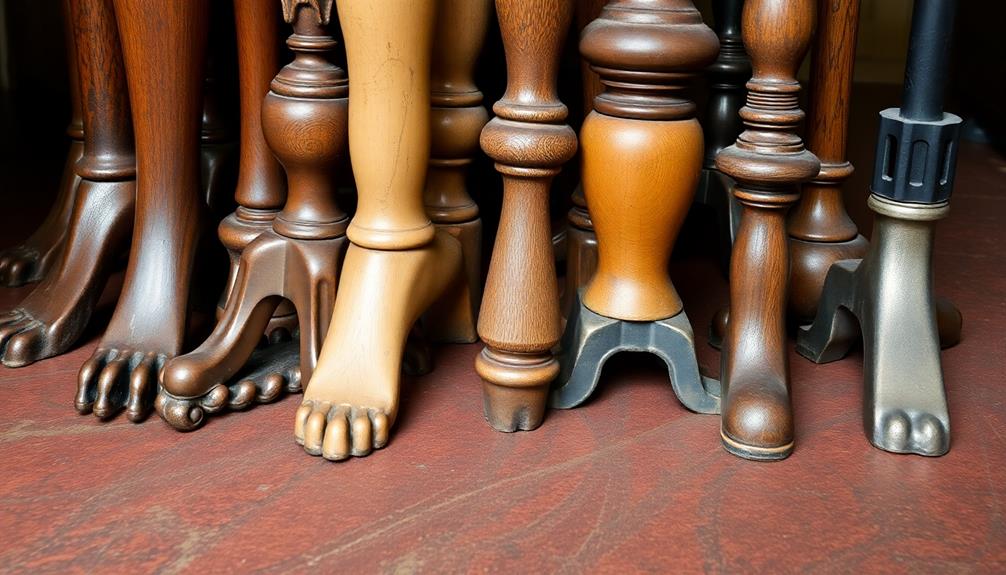
To effectively deepen your understanding of antique furniture dating, you'll often find that a variety of resources can enhance your learning experience. Here are some invaluable options to reflect upon:
- Comprehensive Reference Books: Immerse yourself in texts like "Antique Furniture: A Guide to Dating and Identifying." These books provide detailed insights into foot styles and their historical contexts, helping you recognize and date furniture accurately.
- Online Forums and Communities: Join vibrant online forums where enthusiasts and experts gather. Share knowledge, ask questions, and gain tips on dating furniture by foot styles. You'll be amazed at the wealth of information available.
- Museums and Workshops: Visit local museums showcasing historical furniture. Many offer educational materials and expert-led tours, enhancing your understanding of antique pieces.
Additionally, attend workshops hosted by experienced antique dealers for hands-on experience in examining furniture characteristics.
Don't forget to follow blogs dedicated to furniture restoration, as they often discuss techniques for recognizing and dating antique furniture through its feet and overall design elements.
Embrace these resources, and you'll find your journey into the world of antique furniture more rewarding and insightful.
Frequently Asked Questions
How Can I Tell How Old My Antique Furniture Is?
To determine your antique furniture's age, examine its design, materials, and construction techniques. Look for distinctive features like nails or specific foot styles, and consider the condition to differentiate between genuine antiques and reproductions.
Is There an App for Identifying Antique Furniture?
Think of an app as your digital time machine. Yes, there are apps that identify antique furniture, using photos to reveal age and style. Just remember, they're tools—real expertise always beats a screen's glow.
How Old Is Furniture With Claw Feet?
If you see claw feet, you might be looking at furniture from the mid-1700s to the late 18th century. Check the craftsmanship and materials to help determine its age and authenticity.
How Can You Tell if Furniture Is From the 1800S?
You might think it's hard to identify 1800s furniture, but focus on design details. Look for features like block feet, tapered legs, or ornate carvings, which can help you determine its era with confidence.
Conclusion
Just like a tree's rings tell its story, the feet of your antique furniture whisper secrets of the past. By understanding their unique styles and characteristics, you can unearth the history that shaped them. Remember, each foot is a tiny time capsule, revealing trends and craftsmanship from different eras. So, as you explore these wooden wonders, let the journey of discovery lead you to appreciate not just the furniture, but the stories it carries.
